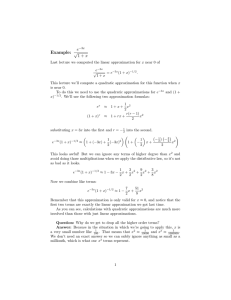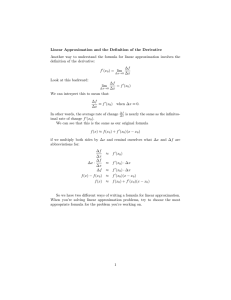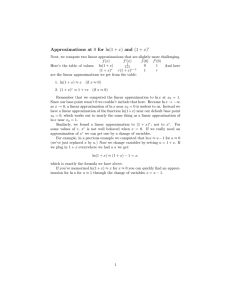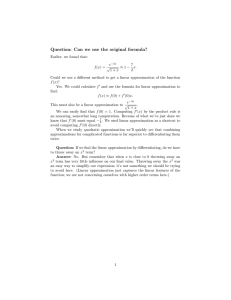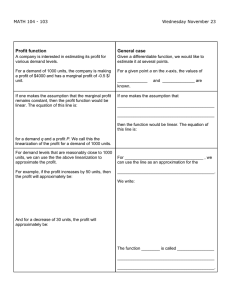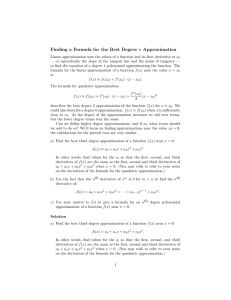Finding a Formula for the ...
advertisement
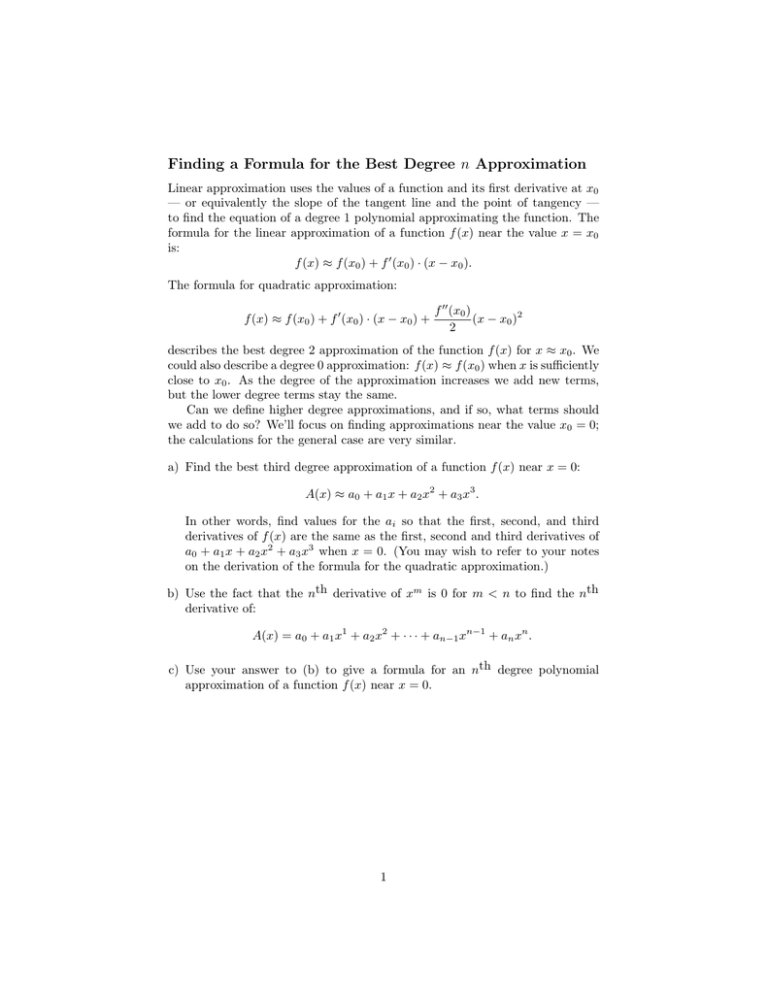
Finding a Formula for the Best Degree n Approximation Linear approximation uses the values of a function and its first derivative at x0 — or equivalently the slope of the tangent line and the point of tangency — to find the equation of a degree 1 polynomial approximating the function. The formula for the linear approximation of a function f (x) near the value x = x0 is: f (x) ≈ f (x0 ) + f � (x0 ) · (x − x0 ). The formula for quadratic approximation: f (x) ≈ f (x0 ) + f � (x0 ) · (x − x0 ) + f �� (x0 ) (x − x0 )2 2 describes the best degree 2 approximation of the function f (x) for x ≈ x0 . We could also describe a degree 0 approximation: f (x) ≈ f (x0 ) when x is sufficiently close to x0 . As the degree of the approximation increases we add new terms, but the lower degree terms stay the same. Can we define higher degree approximations, and if so, what terms should we add to do so? We’ll focus on finding approximations near the value x0 = 0; the calculations for the general case are very similar. a) Find the best third degree approximation of a function f (x) near x = 0: A(x) ≈ a0 + a1 x + a2 x2 + a3 x3 . In other words, find values for the ai so that the first, second, and third derivatives of f (x) are the same as the first, second and third derivatives of a0 + a1 x + a2 x2 + a3 x3 when x = 0. (You may wish to refer to your notes on the derivation of the formula for the quadratic approximation.) b) Use the fact that the nth derivative of xm is 0 for m < n to find the nth derivative of: A(x) = a0 + a1 x1 + a2 x2 + · · · + an−1 xn−1 + an xn . c) Use your answer to (b) to give a formula for an nth degree polynomial approximation of a function f (x) near x = 0. 1 MIT OpenCourseWare http://ocw.mit.edu 18.01SC Single Variable Calculus�� Fall 2010 �� For information about citing these materials or our Terms of Use, visit: http://ocw.mit.edu/terms.
